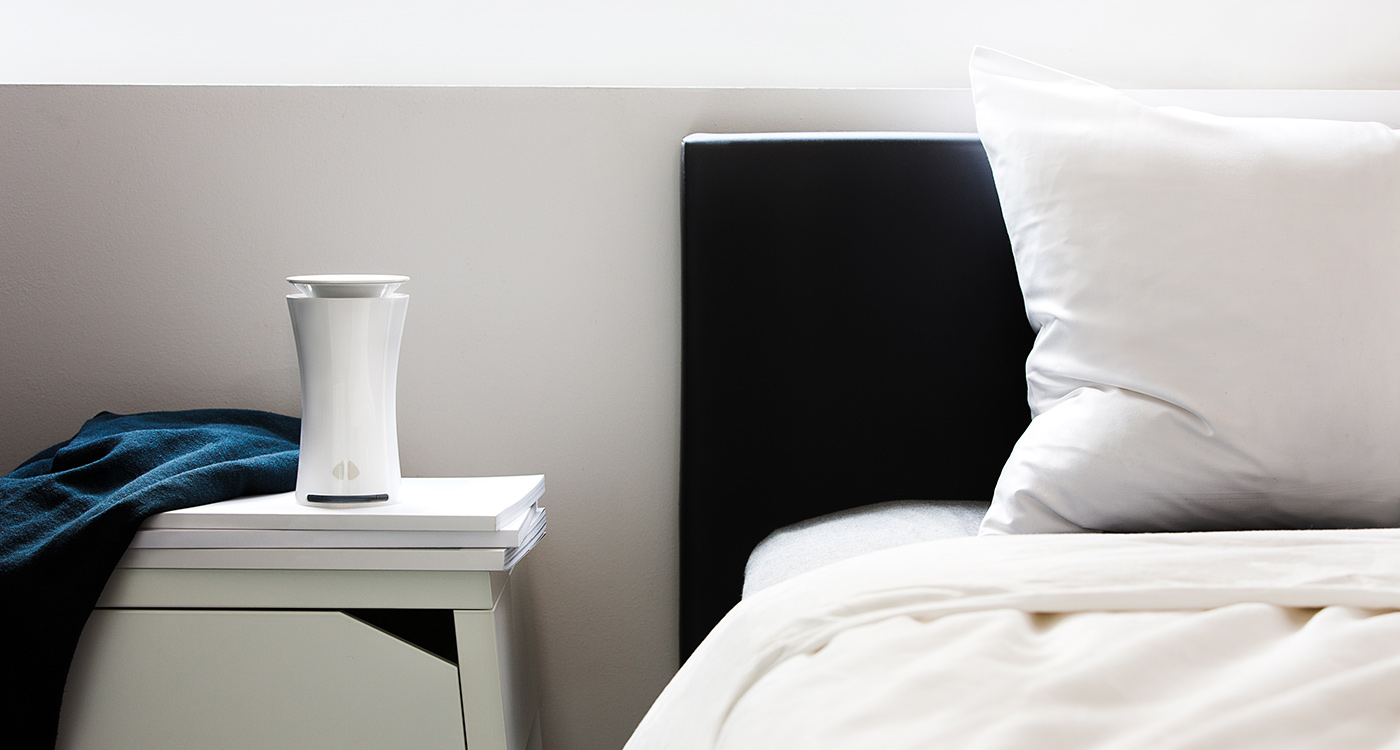News - 2016051203 - uHoo edges out other air quality monitors with extra sensors

We've now gotten to the point where we can rely on pigeons for monitoring outdoor air quality, and there are plenty of conventional options for indoor as well. But there's always room for improvement, which is why we're looking at the uHoo. Impressively, this pint glass-sized device packs up to five air pollutant sensors, thus allowing it to measure the usual dust and volatile organic compounds, as well as carbon dioxide, carbon monoxide and ozone -- these three can't be detected by most other monitors in the consumer market. On top of that, the uHoo can also keep an eye on the temperature, humidity and air pressure, which comes in handy as these contribute to our wellness, too. The live data is fed to your iOS or Android device via Wi-Fi, and the app will alert you when the air goes bad in one of the rooms.
Gallery: uHoo air quality monitor | 8 Photos
The concept of uHoo came together when CEO Dustin Onghanseng and CTO Brian Lin met at the MBA program at the Hong Kong University of Science and Technology back in 2013. Onghanseng has rhinitis and Lin has asthma, so they bonded over a common goal: Preventing air pollutants from affecting our health. They managed to win at a 24-hour hackathon with their first indoor air quality monitor prototype, but it wasn't until after they graduated when they could focus on developing this product.
Today, the uHoo team consists of six full-time staff members, and they are assisted by an agency in Oakland, California. According to Onghanseng, his startup is currently backed by the likes of AIA, KPMG and Konica Minolta who see opportunity in the corporate space: Rather than having to bring in large old monitors that lack live feedback, air quality consultancies can just station several uHoo devices across an office, and then only alert their clients when bad air is detected. Similarly, these firms can use the data to help optimize a building's air-conditioning efficiency by targeting crowded spots -- these would be indicated by higher levels of carbon dioxide and temperature. For the sake of tweaking its algorithm, uHoo has already done pilot runs in both Singapore and Hong Kong.

That's not to say uHoo will only serve the corporate space, though, as it's considering an online direct-sale model and a referral program through air quality service providers -- the latter will apparently be quite effective in Scandinavian countries like the Netherlands, where home air quality services are regulated. This, along with the fact that many Europeans have already signed up on uHoo's wait list, is why Onghanseng is confident that his device will do well in Europe, followed by the US. Eventually, he also hopes to sell uHoo units in China where the air is notoriously bad.
The uHoo is now live on Indiegogo, with the "classic" version starting at $89 a pop but lacks sensors for carbon dioxide, carbon monoxide and ozone, whereas the full "premium" version starts at $139 per unit; both are shipping as early as November. Onghanseng reasoned that the cheaper model is there to encourage the more cost-conscience folks to hop on board, and after this campaign, his team will use this sales data to determine their retail plan. But if you ask us, we'll say you might as well get the whole package, because it's those extra sensors that make the uHoo stand out from the crowd.















